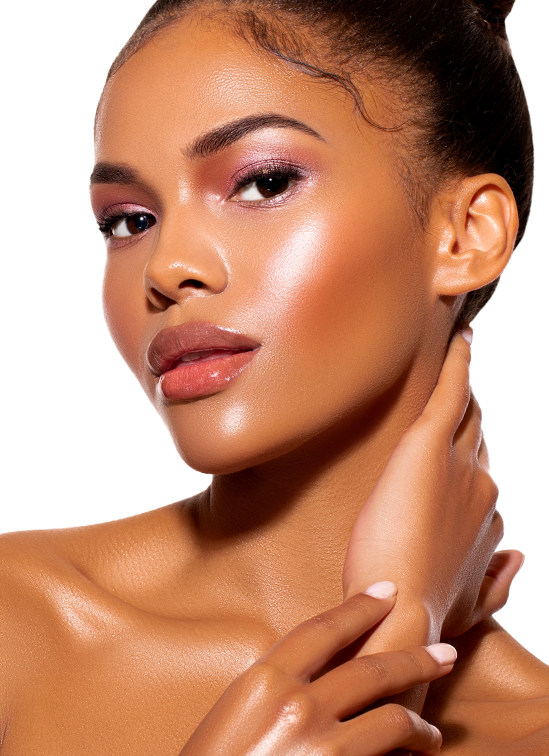The Complete Guide to Medical Peels
Chemical peels are one of the most natural and popular non-invasive treatments to achieve clear and glowing skin.
In fact, with a variety of peeling agents and strengths, peels can treat a multitude of cosmetic concerns including wrinkles, sun damage, and acne scars.
Best of all, chemical peels are highly customizable and can range from light to medium to deep, with downtime matching the depth of the treatment.
So, is a chemical peel right for you? Which peeling agent and depth best suits your needs?
Keep reading for a complete guide on the history of peels, how they work, and the differences between light, medium, and deep chemical peels.
When and How Did Chemical Peels Originate?
The idea of taking products found in nature to improve the appearance and feel of skin is nothing new. In fact, as far back as Cleopatra’s reign in Egypt, people were using alabaster, grape seed scrubs, wine, and sour milk as skincare products.
This resourcefulness helped pave the way for modern peels, which include many of the same chemicals that the Egyptians unknowingly applied. For example, lactic acid is found in sour milk, and grapes produce tartaric acid.
However, it was not until the early 20th century that Dr. George Mackee created the first modern chemical peel of phenol and carbolic acid to treat acne scars.
The use of chemicals to improve the skin continued to evolve from the 1930s to 1950s, and achievements included phenol for wrinkles and the development of medium peels.
The latter consisted of pairing phenol with newer agents such as resorcinol, trichloroacetic acid, and salicylic acid.
Finally, the chemical peels that we know today also include ingredients such as glycolic and pyruvic acid.
How Do Chemical Peels Work?
Chemical peels involve the application of a peeling agent to the skin, which is then absorbed by tissue.
As a result, the chemical creates a controlled injury, breaks down bonds between dead skin cells, causes peeling of the outer skin layers, and finally stimulates growth of healthy new layers.
This ability to exfoliate and remodel the skin makes chemical peels an excellent way to treat wrinkles, acne scars, photodamage, and skin tone and texture. However, they are not able to target blood vessels, keloid scars, or sagging skin.
Additionally, regular peels every six-to-eight weeks can increase collagen and elastin deep within the dermis.
This penetration is only possible with medical grade peels performed by a physician or licensed professional and not capable with at-home treatments.
How Are Chemical Peels Classified as Light, Medium, and Deep?
Chemical peels are classified by light, medium, or deep based on the depth of penetration, which can be modified by the strength of the peeling agent, the number of coats applied, and the amount of time that the peel is active on the skin before its neutralized.
Whats a Light Chemical Peel?
A light chemical peel only acts upon the epidermis, the uppermost layer of the skin, and is often referred to as a lunchtime peel.
It’s usually comprised of alpha hydroxy acids (AHAs) or beta hydroxy acids (BHAs) and works well for tone and texture and fine lines.
Patients that are seeking brighter, softer, and smoother skin without any downtime would benefit from a light chemical peel.
What’s a Medium Chemical Peel?
Trichloroacetic acid (TCA) is typically the peeling agent used in medium chemical peels, and it can target sun damage, discoloration, and moderate wrinkles.
It produces more dramatic results than a light peel, but also has more potential side effects such as swelling, itching, burning, and stinging for up to an hour post-procedure. Patients may also note brown and white patches and, very rarely, scarring.
Additionally, this degree of peeling requires approximately a one week recovery, but the skin can remain pink for up to six weeks.
What’s a Deep Chemical Peel?
A deep chemical peel is able to reach the collagen-rich dermis with a formulation of carbolic acid (aka phenol) or a concentrated, high-strength TCA.
This type of peel yields the most significant improvement in skin tone and texture and can eliminate sun damage and deeper scars and wrinkles.
Patients should be prepared that the skin will resemble a severe sunburn post-procedure, and they may experience swelling, itching, and peeling scabs. It also presents a greater risk for permanent patches of white or bleached skin.
A deep peel also necessitates approximately 2 weeks of social downtime, and redness may persist for several months.
Nevertheless, in the hands of a skilled and experienced provider, chemical peels can be a safe and effective treatment that matches your aesthetic goals and capacity for downtime.
To learn more about chemical peels, please call our office today to schedule a consultation.
Dr. Eliot Battle
Dr. Eliot Battle, CEO of Cultura Dermatology, is a global leader in cosmetic dermatology and laser innovation. His Harvard research pioneered “color-blind” lasers, making treatments safe for all skin tones. A sought-after expert featured in TIME, Oprah, and The New York Times, he continues to advance inclusive, cutting-edge dermatological care.
These too might interest you
June 13, 2025
Aerolase vs. Traditional Laser Hair Removal: What’s the Difference and Why It Matters for Skin of Color
Laser hair removal has evolved significantly over the past two decades, especially for patients with richly pigmented skin, darker skin. Among newer devices, Aerolase,…
READ ARTICLEJune 10, 2025
Aesthetic Treatments for Men in DC: What Today’s Professionals Are Choosing in 2025
In Washington, DC, presentation matters. Whether you’re leading a boardroom meeting, addressing a courtroom, or appearing on camera for media or virtual conferences, your…
READ ARTICLEApril 3, 2025
Laser Hair Removal for Black and Dark Skin: Why Cultura Dermatology in Washington DC Sets the Gold Standard
In the evolving landscape of cosmetic dermatology, finding safe and effective laser hair removal for darker skin tones has historically been challenging. However, at…
READ ARTICLE











